Things To Do


Cliffs of Moher
The cliffs consist mainly of beds of Namurian shale and sandstone, with the oldest rocks being found at the bottom of the cliffs. One can see 300 million year old river channels cutting through the base of the cliffs. There are many animals living on the cliffs, most of them birds: 30,000 birds of 29 species.

Guinness Factory
The storehouse represents over two centuries of Irish brewing history and is an embodiment of Irish culture, creativity, and entrepreneurship. It is a symbol of Ireland's international reputation and its contribution to the global community.
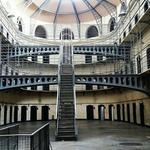
Kilmainham Gaol
Kilmainham Gaol is a former prison in Kilmainham, Dublin, Ireland. It is now a museum run by the Office of Public Works, an agency of the Government of Ireland. Many Irish revolutionaries, including the leaders of the 1916 Easter Rising, were imprisoned and executed in the prison by the orders of the UK Government.

The Book of Kells Experience
The Book of Kells in Dublin, Trinity College Library is an illuminated manuscript and Celtic Gospel book in Latin. Containing the four Gospels of the New Testament together with various prefatory texts and tables. It was created in a Columban monastery in either Ireland or Scotland, and may have had contributions from various Columban institutions from each of these areas. It is believed to have been created c. 800 AD. The text of the Gospels is largely drawn from the Vulgate, although it also includes several passages drawn from the earlier versions of the Bible known as the Vetus Latina. It is regarded as a masterwork of Western calligraphy and the pinnacle of Insular illumination. The manuscript takes its name from the Abbey of Kells, County Meath, which was its home for centuries.
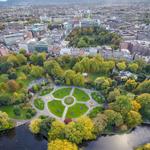
Saint Stephen's Green
Lord Ardilaun opened it for the citizens of the city in 1880. This 9-hectare green space has been maintained in its original Victorian layout, with extensive tree and shrub planting and spectacular spring and summer bedding. The herbaceous border provides vibrant colour from early spring to late autumn. It boasts over 3.5 kilometres of accessible pathways. The waterfall and Pulham rockwork on the western side of the green are well worth a visit. So is the ornamental lake, which provides a home for waterfowl. Several sculptures are located throughout the green, including the James Joyce Memorial Sculpture and a fine specimen by Henry Moore.

Killarney National Park
In the southwest of County Kerry is an expanse of rugged, mountainous country that sweeps down to the world-famous Lakes of Killarney. Here, stretching across 10,000 hectares, lies Killarney National Park, with its unforgettable combination of mountains, lakes, woodland and waterfalls. Killarney National Park incorporates the lakes as well as Kenmare and Muckross Estate, including Bourn Vincent Memorial Park, presented to the State in 1932 as Ireland’s first National Park. Twinned with Glacier National Park in Montana, USA, Killarney National Park has been designated as a Biosphere Reserve by the United Nations Educational, Scientific and Cultural Organisation (UNESCO) for our work in conservation and research. Learn more about the ancient Reenadinna Woods, the heritage sites within the National Park, and our many activities for outdoor enthusiasts.
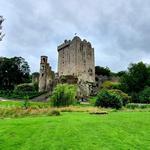
Blarney Castle & Gardens
Blarney Castle is a medieval stronghold in Blarney, a town in Cork, Ireland. Though earlier fortifications were built on the same spot, the current keep was built by the MacCarthy of Muskerry dynasty, a cadet branch of the Kings of Desmond, and dates from 1446. The Blarney Stone is among the machicolations of the castle.

Trinity College Dublin
Trinity College near Dublin, is the sole constituent college of the University of Dublin, Ireland. Founded in early 1592 by Queen Elizabeth I who issued a royal charter, it is Ireland's oldest university and was modelled after the collegiate universities of both Oxford and Cambridge.Named after The Holy Trinity, the epithets "Trinity College Dublin" and "University of Dublin" are usually synonymous for administrative purposes, as only one such college was ever established.
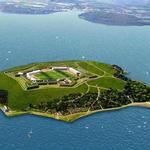
Spike Island
Spike Island is an island of 103 acres in Cork Harbour, Ireland. Originally the site of a monastic settlement, the island is dominated by an 18th-century bastion fort now named Fort Mitchel. The island's strategic location within the harbour meant it was used at times for defence and as a prison. Since the early 21st century the island has been developed as a heritage tourist attraction, with €5.5 million investment in exhibition and visitor spaces and accompanying tourism marketing. There were in excess of 81,000 visitors to the island during 2019, a 21% increase on 2018 numbers. Spike Island was named top European tourist attraction at the 2017 World Travel Awards.
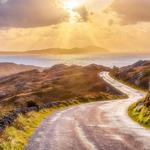
Wild Atlantic Way
The Wild Atlantic Way is a tourism trail on the west coast, and on parts of the north and south coasts, of Ireland. The 2,500 km (1,553 mile) driving route passes through nine counties and three provinces, stretching from County Donegal's Inishowen Peninsula in Ulster to Kinsale, County Cork, in Munster, on the Celtic Sea coast.